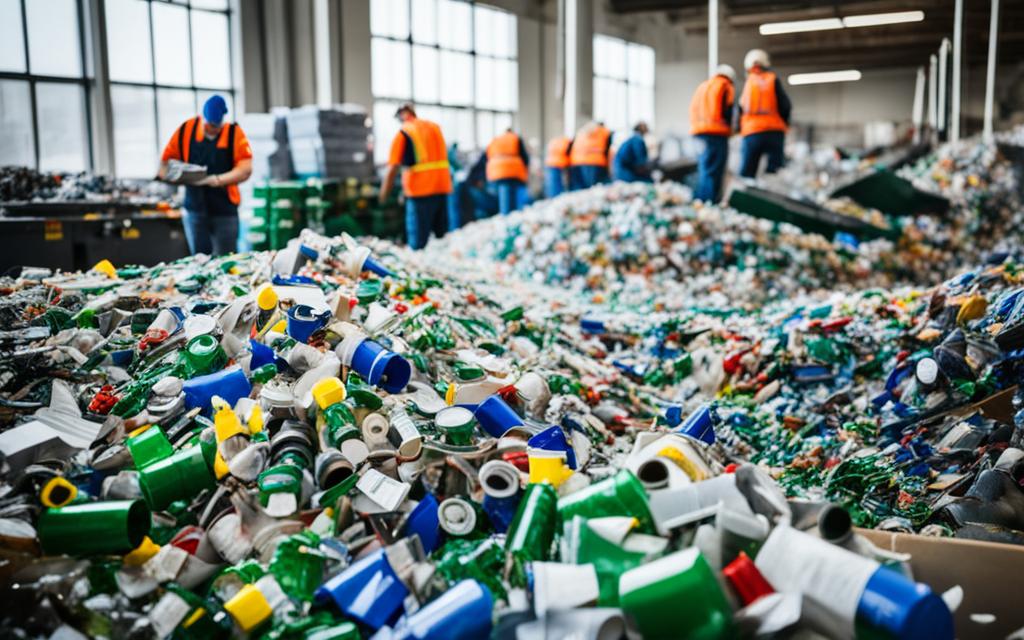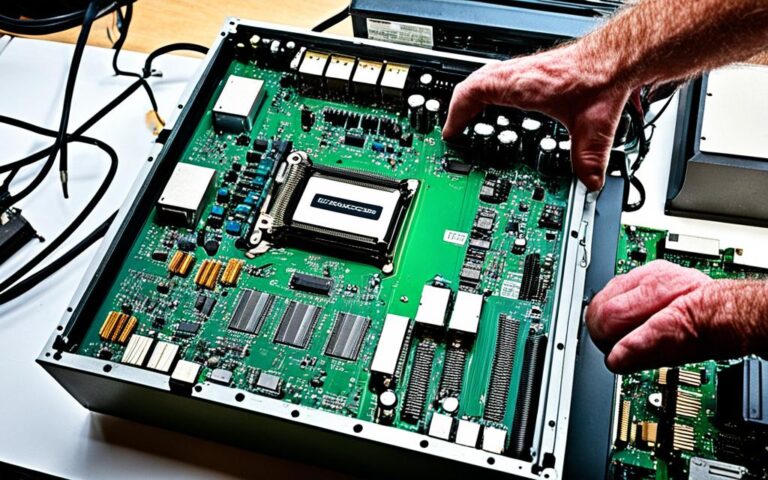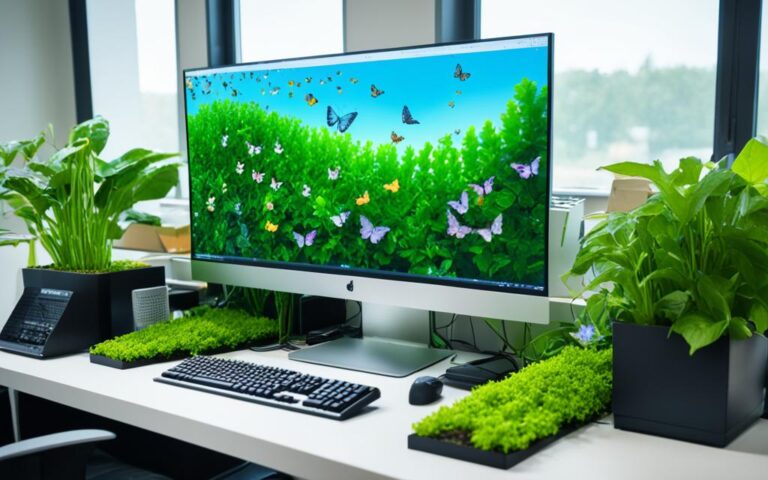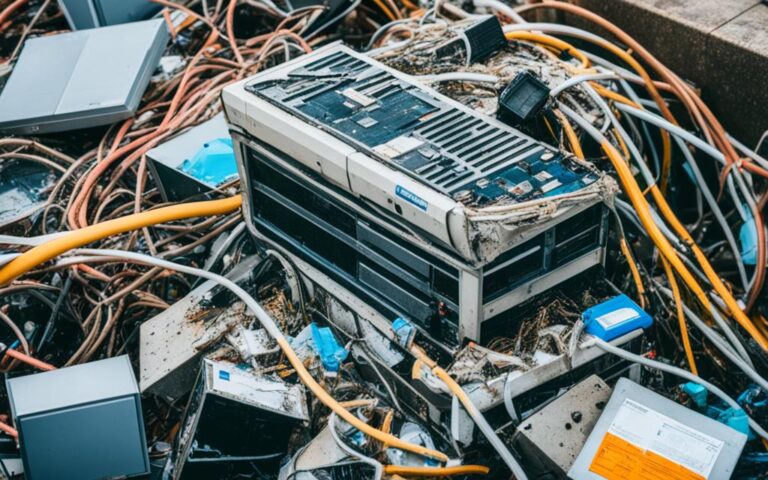Reclaiming Resources: Material Reclamation in Workstations
Material reclamation plays a pivotal role in recycling, enhancing sustainability in UK workstations. The 3R mantra of reducing waste, reusing materials, and recycling is key to achieving this. By reducing the amount of waste produced, reusing old technology and appliances, and recycling e-waste, valuable resources can be reclaimed and used to manufacture new products, reducing the need for raw materials.
Implementing sustainable practices in workstations is essential to reduce the environmental impact and promote resource conservation. Material reclamation ensures that valuable resources are not wasted and are instead reused in the manufacturing process. This not only reduces the reliance on virgin raw materials but also helps conserve energy and reduce carbon emissions. By prioritizing material reclamation, companies can contribute to the circular economy and play their part in creating a more sustainable future.
The Advantages of Server and Workstation Recycling
Server and workstation recycling offers numerous advantages. When computers and IT equipment are disassembled, valuable metals can be recovered and used in the manufacturing of new devices, reducing the need for precious metals and limiting waste.
Recycling workstations and servers also helps minimize the development costs for new systems, reduces energy consumption in manufacturing, prevents the release of hazardous materials into the environment, and promotes the use of recycled raw materials, which are of the same quality as virgin raw materials.
By recycling servers and workstations, businesses not only contribute to environmental sustainability but also benefit from cost savings and improved resource management. Let’s explore the key advantages of server and workstation recycling:
- Reduced reliance on precious metals: Disassembling and recycling servers and workstations allows for the recovery of valuable metals such as gold, silver, and copper. These metals can be reused in the manufacturing of new devices, reducing the need for extracting and refining raw materials.
- Cost savings: Recycling workstations and servers helps minimize the development costs associated with creating new systems. By reusing components and materials, businesses can lower their expenses and allocate resources more efficiently.
- Energy conservation: The recycling process consumes significantly less energy compared to manufacturing new equipment from scratch. Recycling reduces the demand for energy-intensive processes involved in material extraction, refining, and manufacturing.
- Environmental protection: Server and workstation recycling prevent the release of hazardous materials such as heavy metals and toxic chemicals into the environment. Responsible recycling practices safeguard ecosystems, air quality, and water sources.
- Promotion of recycled raw materials: Using recycled raw materials in the production of new devices reduces reliance on virgin resources, conserving natural reserves and preserving the environment.
Economic and Environmental Impact
“Recycling workstations and servers not only benefits the environment but also provides significant economic advantages. By adopting sustainable practices and embracing the circular economy, businesses can reduce costs, promote resource conservation, and contribute to a greener future.”
Overall, server and workstation recycling offer a multitude of benefits, ranging from resource conservation and cost savings to environmental protection and reduced reliance on traditional mining and manufacturing practices. By embracing recycling initiatives, businesses can make a positive impact and contribute to a more sustainable and prosperous future.
The Process of Materials Recovery Facilities (MRFs)
In the world of recycling, Materials Recovery Facilities (MRFs) play a critical role in the efficient and effective sorting and preparation of dry recyclable materials. Also known as Materials Recycling Facilities or Materials Reclamation facilities, MRFs are specialized plants that receive, sort, and process various materials, ensuring they are ready for recycling.
MRFs utilize a range of advanced technologies to sort materials based on their physical and chemical properties. This enables the efficient separation of different types of recyclables, such as paper, plastic, glass, and metal. The MRF process begins with the unloading of waste in the tipping area, where it is carefully deposited and prepared for further sorting.
- The waste then proceeds to a trommel, a large rotating cylinder screen, which separates it into different size fractions. This step ensures that smaller materials, such as glass shards and tins, can be separated from larger items.
- After the trommel, the recyclables move on to the main picking station. Here, skilled workers manually separate the materials by hand, removing contaminants and ensuring that only high-quality recyclables continue in the process.
- The sorted materials are then processed further, such as baling and packaging, to prepare them for disposal or transportation to recycling facilities where they can be transformed into new products.
By employing sophisticated technologies and skilled human labor, MRFs contribute significantly to the recycling process, ensuring that valuable materials are recovered and diverted from landfills. The seamless integration of various sorting techniques guarantees the maximum recovery of recyclables, while minimizing the amount of waste that enters the disposal system.
Ergonomics and Occupational Hygiene at Materials Recovery Facilities
Ergonomics plays a vital role in safeguarding the safety and well-being of workers at Materials Recovery Facilities (MRFs). The design of conveyor belt workstations is crucial to prevent the occurrence of musculoskeletal injuries resulting from excessive bending, twisting, and over-reaching.
MRFs also need to address occupational hygiene concerns as the recycling processes can generate organic dust. These microscopic particles can expose workers to airborne microorganisms and their toxic by-products, posing potential health risks.
To ensure the protection of workers from dust exposure, MRFs must implement appropriate control measures. Conducting regular risk assessments allows for the identification and mitigation of potential hazards. Ventilation systems should be in place to effectively remove and control the concentration of dust particles in the environment, reducing the risk of inhalation. Additionally, providing workers with respiratory protective equipment, such as masks, can further minimize their exposure to harmful airborne contaminants.
By prioritizing ergonomics and occupational hygiene, MRFs can create a safer and healthier work environment for their employees. This not only promotes workers’ well-being but also enhances the overall efficiency and productivity of recycling operations, contributing to a sustainable and responsible recycling industry.
Ergonomics Guidelines for Conveyor Belt Workstations:
- Ensure conveyor belt height is adjustable to accommodate workers of different heights and prevent awkward postures.
- Provide footrests or anti-fatigue mats to reduce the strain on workers’ lower limbs.
- Install conveyor belt controls within easy reach to minimize excessive reaching and twisting.
Control Measures for Occupational Hygiene:
- Conduct regular air sampling to monitor dust levels and assess the effectiveness of control measures.
- Implement proper housekeeping practices to minimize dust accumulation in the workplace.
- Offer training and education programs to raise awareness among workers about the importance of personal hygiene and the proper use of respiratory protective equipment.
“Ensuring ergonomics and occupational hygiene at MRFs is essential for protecting workers’ health and improving their overall well-being. By implementing appropriate measures, we can create a safe and healthy environment that enhances worker productivity and promotes sustainable recycling practices.” – Dr. Emma Johnson, Occupational Health Specialist
Conclusion
In conclusion, sustainable recycling practices in workstations play a pivotal role in resource conservation and minimizing the environmental impact. By adopting a comprehensive approach that includes reducing waste, reusing materials, and recycling e-waste, valuable resources can be reclaimed and reused in the manufacturing process.
Server and workstation recycling offer numerous benefits, including the conservation of resources and the reduction of energy consumption. By recycling these devices, we can prevent the release of hazardous materials into the environment and promote the use of recycled raw materials, which are of the same quality as virgin raw materials.
The processes involved in Materials Recovery Facilities (MRFs) require the implementation of proper ergonomics and occupational hygiene measures to ensure the health and safety of workers. This includes designing conveyor belt workstations that minimize musculoskeletal injuries and implementing control measures to address dust exposure and protect workers from airborne microorganisms and toxic by-products.
Implementing sustainable recycling practices not only benefits the environment but also contributes to the circular economy and the preservation of our planet’s valuable natural resources. By reclaiming and repurposing materials, we can conserve resources, reduce energy consumption, and minimize the environmental impact of manufacturing processes. It is essential that businesses and individuals adopt sustainable recycling practices to create a greener future for generations to come.
FAQ
What is material reclamation and how does it relate to recycling?
Material reclamation is the process of recovering valuable resources from waste materials, which plays a pivotal role in recycling. By reducing waste, reusing materials, and recycling e-waste, valuable resources can be reclaimed and used to manufacture new products, reducing the need for raw materials.
What are the advantages of server and workstation recycling?
Server and workstation recycling offer numerous benefits. When computers and IT equipment are disassembled, valuable metals can be recovered and used in the manufacturing of new devices, reducing the need for precious metals and limiting waste. Recycling workstations and servers also helps minimize the development costs for new systems, reduces energy consumption in manufacturing, prevents the release of hazardous materials into the environment, and promotes the use of recycled raw materials.
What are Materials Recovery Facilities (MRFs) and how do they work?
Materials Recovery Facilities (MRFs) are specialized plants that receive, sort, and prepare dry recyclable materials. MRFs use a range of technologies to sort materials based on their physical and chemical properties. The process involves unloading waste in the tipping area, conveying it into a trommel, which sorts the material into different sizes. The recyclables are then separated and hand-picked at a main picking station. The sorted materials are then baled and packaged for disposal or further processing.
Why is ergonomics important in Materials Recovery Facilities?
Ergonomics plays an important role in ensuring the safety and health of workers at Materials Recovery Facilities (MRFs). Conveyor belt workstations should be properly designed to prevent excessive bending, twisting, and over-reaching, which can lead to musculoskeletal injuries.
How do Materials Recovery Facilities address occupational hygiene?
The processes involved in recycling can generate organic dust, exposing workers to airborne microorganisms and their toxic by-products. Control measures such as risk assessments, ventilation systems, and respiratory protective equipment should be implemented to protect workers from exposure.















